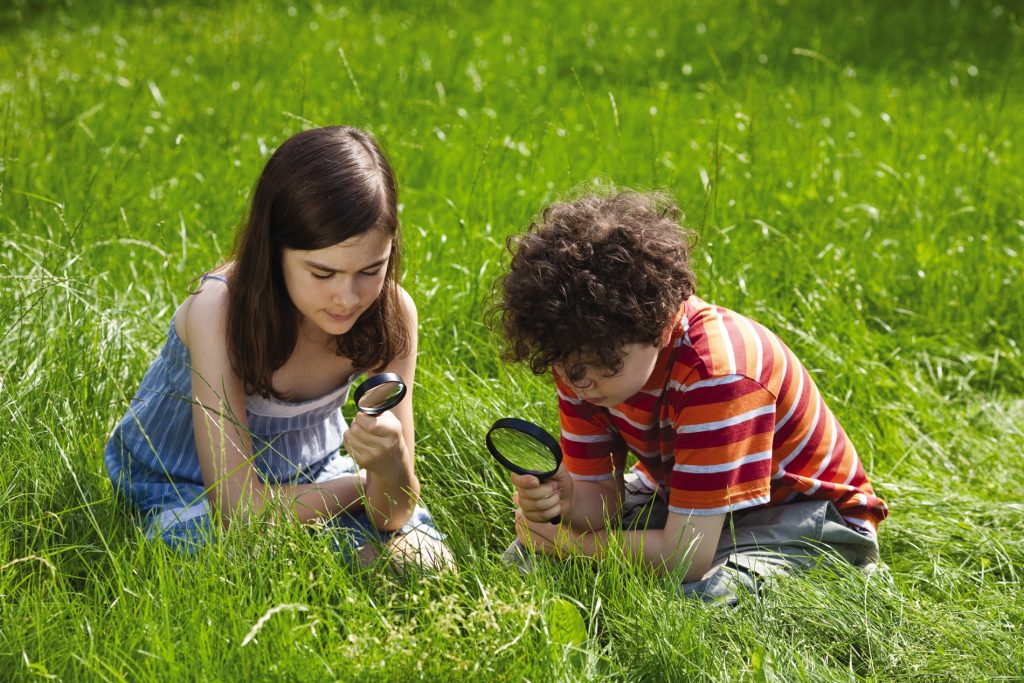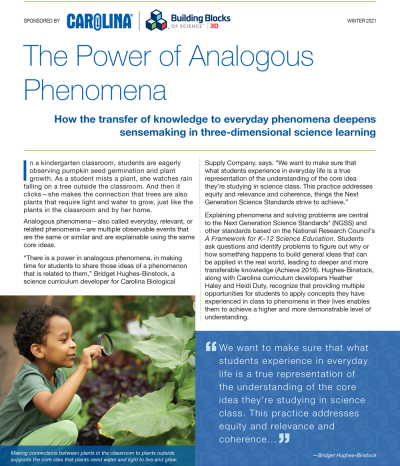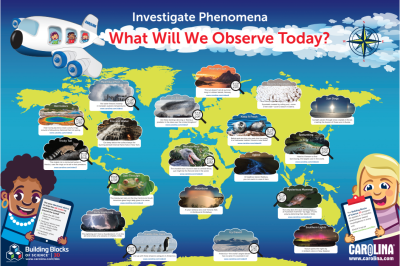The goal is not to teach as many examples of phenomena as possible but to maximize learning by teaching with science phenomena. There are many teaching strategies but there are 3 at the top of that list when using examples of phenomena. Learn what these 3 essential teaching strategies are to get students to figure out more, solve more and learn more.
Learn More
The Power of Analogous Phenomena
In a kindergarten classroom, students are eagerly observing pumpkin seed germination and plant growth. As a student mists a plant, she watches rain falling on a tree outside the classroom. And then it clicks—she makes the connection that trees are also plants that require light and water to grow, just like the plants in the classroom and by her home.
Interactive Phenomena Poster
Download the poster, then click on the images or scan the QR codes to experience phenomena around the world.
Carolina’s K-12 Curriculum Science Programs
Looking for hands-on, phenomena-based science programs that support the Next Generation Science Standards and STEM?
About The Author
Carolina Staff
Carolina is teamed with teachers and continually provides valuable resources–articles, activities, and how-to videos–to help teachers in their classroom.



